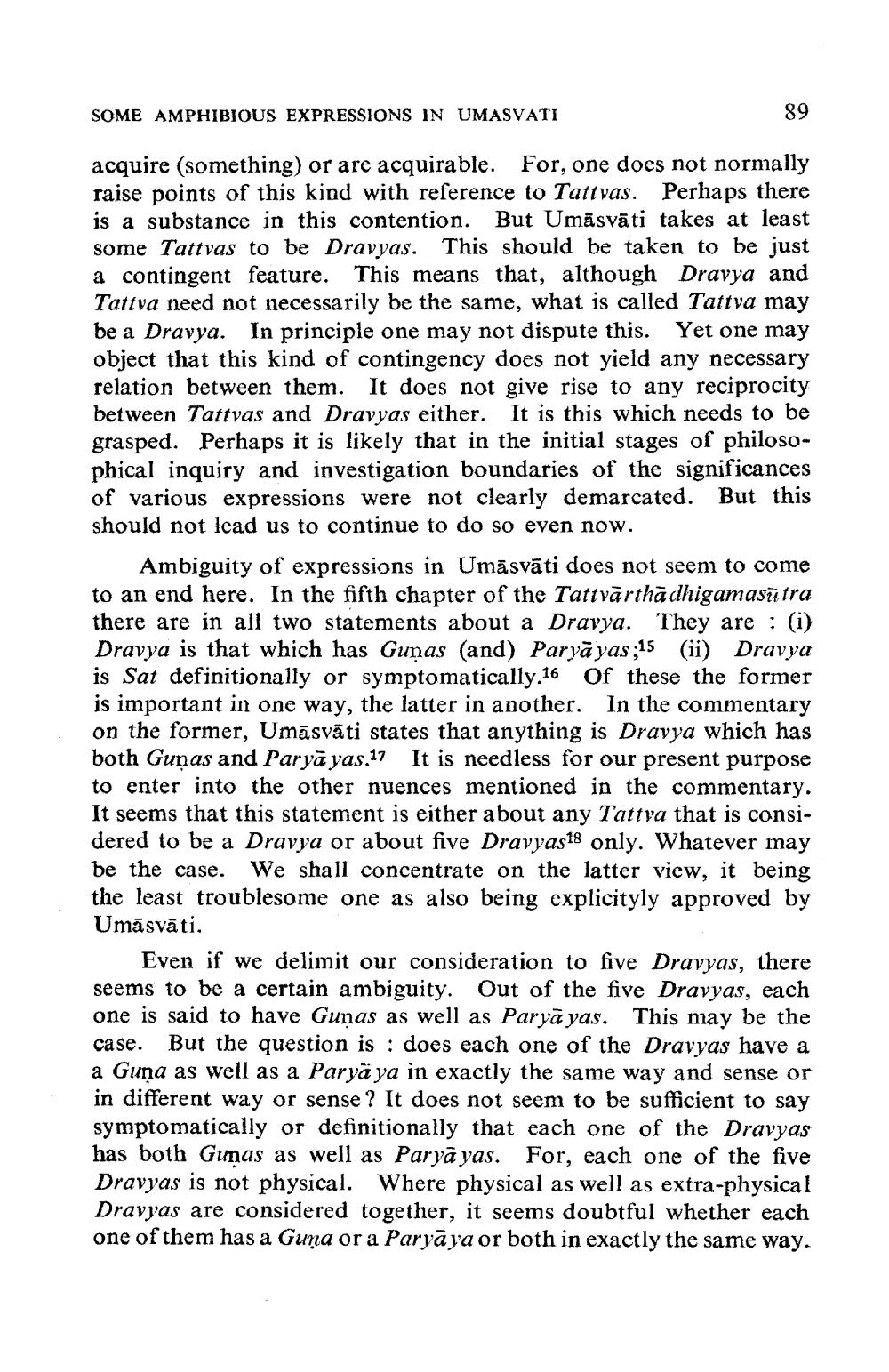________________
SOME AMPHIBIOUS EXPRESSIONS IN UMASVATI
89
acquire (something) or are acquirable. For, one does not normally raise points of this kind with reference to Tattvas. Perhaps there is a substance in this contention. But Umāsvāti takes at least some Tattvas to be Dravyas. This should be taken to be just a contingent feature. This means that, although Dravya and Tattva need not necessarily be the same, what is called Tattva may be a Dravya. In principle one may not dispute this. Yet one may object that this kind of contingency does not yield any necessary relation between them. It does not give rise to any reciprocity between Tattvas and Dravyas either. It is this which needs to be grasped. Perhaps it is likely that in the initial stages of philosophical inquiry and investigation boundaries of the significances of various expressions were not clearly demarcated. But this should not lead us to continue to do so even now.
Ambiguity of expressions in Umāsvāti does not seem to come to an end here. In the fifth chapter of the Tattvärthadhigamasutra there are in all two statements about a Dravya. They are : (i) Dravya is that which has Gunas (and) Paryā yas;15 (ii) Dravya is Sat definitionally or symptomatically.16 Of these the former is important in one way, the latter in another. In the commentary on the former, Umāsvāti states that anything is Dravya which has both Gunas and Paryā yas 17 It is needless for our present purpose to enter into the other nuences mentioned in the commentary. It seems that this statement is either about any Tattya that is considered to be a Dravya or about five Dravyas18 only. Whatever may be the case. We shall concentrate on the latter view, it being the least troublesome one as also being explicityly approved by Umāsvāti.
Even if we delimit our consideration to five Dravyas, there seems to be a certain ambiguity. Out of the five Dravyas, each one is said to have Gunas as well as Paryā yas. This may be the case. But the question is: does each one of the Dravyas have a a Guna as well as a Parya ya in exactly the same way and sense or in different way or sense? It does not seem to be sufficient to say symptomatically or definitionally that each one of the Dravyas has both Gunas as well as Paryā yas. For, each one of the five Dravyas is not physical. Where physical as well as extra-physical Dravyas are considered together, it seems doubtful whether each one of them has a Guna or a Paryāya or both in exactly the same way.




